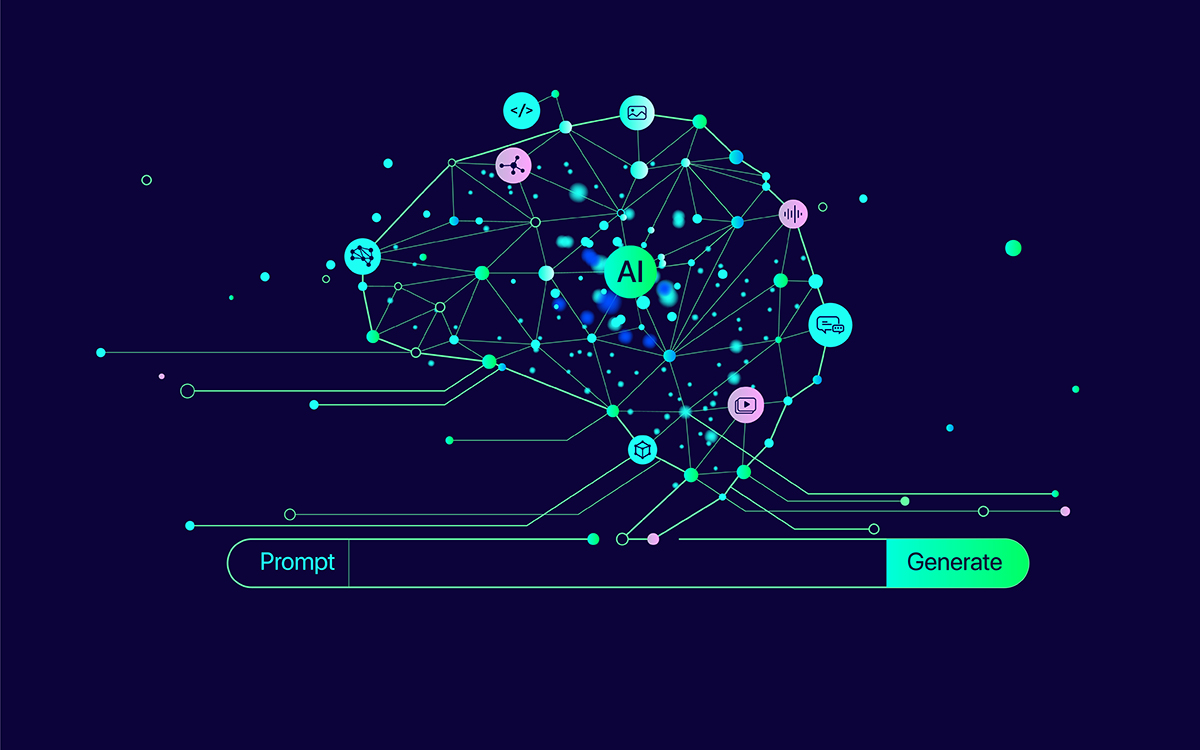
Empowering Discovery: The Role of RAG Architecture & Generative AI in Healthcare & Life Sciences

Generative AI has impacted our day-to-day life significantly. It excels at creating text responses based on Large Language Models. However, the accuracy of information provided by Generative AI continues to be questionable. Generative AI responses depend significantly on the LLMs they are trained on. The information on LLM may not be completely authenticated and updated, which forces organizations to be highly cautious while using a Generative AI model, specifically in industries such as Healthcare and Life Sciences.
Retrieval Augmented Reality (RAG) is a solution to this industry-agnostic challenge. RAG provides authenticated and updated information based on context provided to the model for generating answers, without changing the underlying LLM model. So, an organization can create its own RAG Architecture, which can help an existing LLM model to get more relevant, updated, and contextual information, providing more accurate results.
Also Read: Harnessing Generative AI in Cloud Migration: A Game-Changer for the 7 Rs Strategy
The potential of Generative AI, particularly RAG Architecture, to revolutionize healthcare and life sciences is undeniable. From expediting diagnoses and optimizing drug discovery to empowering patients and enhancing information retrieval, AI has the potential to transform healthcare by optimizing both administrative functions and medical care provisions. It will have financial and non-financial benefits for the global health system, such as improved care quality, enhanced patient experience, and greater clinician satisfaction.
Understanding Generative AI and RAG Architecture
Generative AI encompasses a broad range of techniques, including deep learning models and transformers, that can learn from existing data to generate entirely new content, such as text, images, and even code. This opens doors to a plethora of applications.
Retrieval-Augmented Generation (RAG) is the process of optimizing the output of a large language model, so it references an authoritative knowledge base outside of its training data sources before generating a response. At the core of RAG Architecture lie sophisticated architectures that facilitate seamless integration of retrieval and generation processes. These models leverage pre-trained language representations and employ mechanisms for information retrieval, comprehension, and synthesis, allowing them to comprehend queries, retrieve pertinent information, and generate coherent and contextually relevant responses.

Also Read: Generative AI in BFSI: A Real-World Success Story
These models typically consist of three main components:
Retriever: This component is responsible for efficiently retrieving relevant information from large databases or knowledge graphs based on the input query. It employs techniques such as semantic search or passage retrieval to identify and extract pertinent information.
Reader: Once the relevant information is retrieved, the reader component processes and comprehends the retrieved content, extracting key insights and understanding its context. This enables the model to generate contextually relevant responses aligned with the input query.
Also Read: From Science Fiction to Reality: The Rise of AI Digital Twins
Generator: Finally, the generator component synthesizes the retrieved information with the input query to generate coherent and contextually appropriate outputs. This component leverages techniques such as natural language generation (NLG) to produce human-readable text or other forms of content.
Overall, the integration of these components within the architecture of RAG Architecture empowers them to efficiently retrieve, comprehend, and generate information, making them invaluable tools for a wide range of applications in healthcare and life sciences software companies.
Use Cases in Healthcare and Life Sciences:
The potential applications of RAG Architecture within the healthcare and life sciences are vast and transformative. Let’s explore some key use cases:
- Medical Diagnosis Assistance: By rapidly accessing and integrating information from medical literature, patient records, and research papers, RAG Architecture can assist healthcare professionals in expediting diagnosis and improving patient outcomes. Imagine a scenario where a doctor can consult a RAG based solution for a complex case, and the model efficiently retrieves relevant data points, suggests possible diagnoses in conjunction with other medical models, based on the patient’s specific condition and medical history, and even highlights similar cases from previous studies for further reference.
- Drug Discovery and Development: Sifting through mountains of data is a major bottleneck in drug discovery. RAG Architecture can accelerate this process by analyzing chemical compounds, biological data, and research papers to identify potential drug candidates.
- Clinical Trial Design Optimization: Designing efficient clinical trials is crucial for accelerating drug development. RAG Architecture can analyze existing studies, identify relevant patient groups, and identify potential outcomes from past results, enabling researchers to optimize trial design, ensure inclusion/exclusion criteria are relevant, and ultimately reduce costs associated with drug development.
- Healthcare Information Retrieval and NLP in EHRs: The RAG Architecture assists healthcare professionals in accessing essential information from electronic health records (EHRs), medical texts, and clinical guidelines. By simplifying access to vital information, it enables practitioners to make more informed clinical decisions, enhances medical education, and promotes evidence-based treatment. Additionally, RAG Architecture plays a crucial role in extracting meaningful insights from the vast amount of unstructured data within EHRs, such as clinical notes, radiology reports, and pathology reports. This aids in information retrieval, patient monitoring, and quality improvement initiatives, addressing the challenge of navigating through extensive unstructured data.
- Patient Education and Engagement: Tailored communication is crucial for empowering patients to actively participate in their healthcare. RAG Architecture can generate personalized educational materials, treatment plans, and wellness recommendations based on a patient’s specific health status, preferences, and goals. This fosters patient engagement, improves understanding of their conditions, and empowers them to make informed decisions regarding their healthcare journey.
- Healthcare Chatbots and Virtual Assistants: Conversational agents powered by RAG Architecture can interact with patients, answer their healthcare-related questions, and provide relevant information on symptoms, conditions, treatments, and preventive measures. This can improve patient engagement, enhance accessibility to healthcare services, and offer 24/7 support.
- Medical Literature Summarization: Staying updated with the latest advancements in the vast field of medicine can be challenging. RAG Architecture can automatically summarize large volumes of medical literature, research articles, and clinical guidelines into concise and informative summaries, saving valuable time for healthcare professionals and researchers and ensuring they remain current with the latest findings in their respective fields.
Also Read: Top 3 Use Cases of AI From a Healthcare Technology Leader
Conclusion:
AI-enabled solutions could support clinicians in making precise diagnoses using inputs from in-vitro diagnostics, imaging, electronic health records (EHRs), patient conversations, biometrics, images, sensors, wearables, and genomics. RAG Architecture, with their ability to retrieve and integrate relevant information, can augment this process by providing healthcare professionals with comprehensive insights and supporting evidence for accurate diagnoses.
While concerns about data security remain valid, investments in secure data environments (SDEs) and robust data protection measures can alleviate these anxieties.
Also Read: Transformative Power of AI and Intelligent Automation in Pharmacovigilance
Moving forward, it is essential to create collaboration among researchers, medical professionals, politicians, and AI developers. Working together, we can achieve the full potential of Generative AI and RAG Architecture to transform healthcare, enhance patient outcomes, and, ultimately, build a healthier future for everyone.
Also Read: Fine-Tuning AI as a Catalyst for Medical Innovation
Also Read: Remote Patient Monitoring: Empowering Healthcare Beyond the Hospital
Also read: Empowering AI-Driven Insights: Enhancing Monitoring and Analysis with Generative AI
Also read: The Future of Healthcare is Data-Driven
Also read: Optimizing Clinical Trials with CTIS: A Digital Transformation Blueprint for Pharma and CROs




